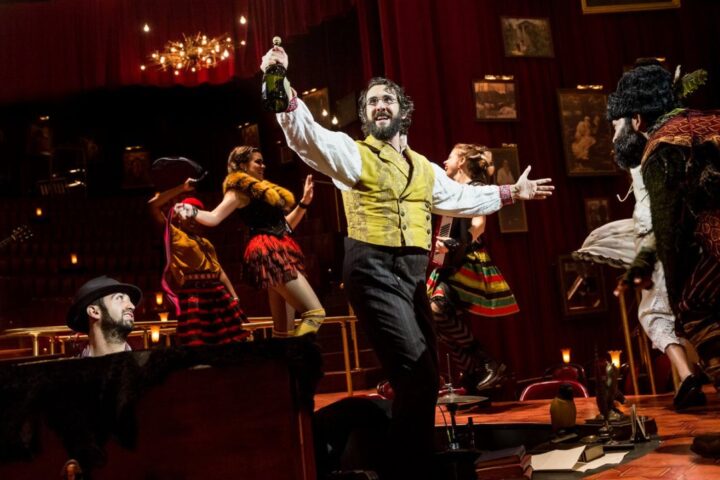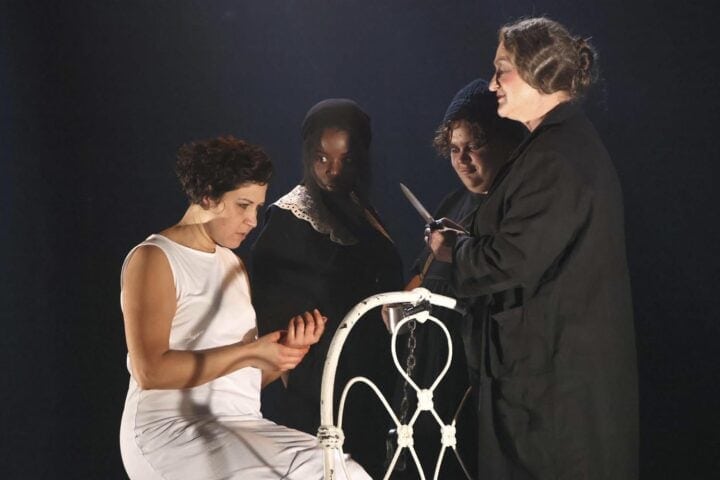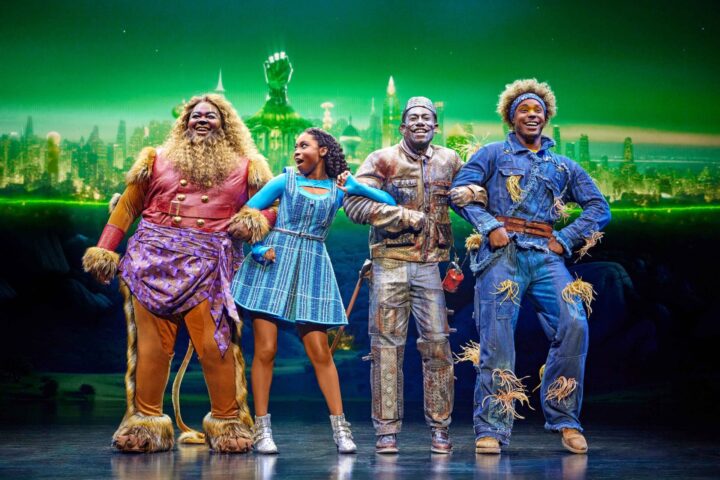Little is known about Rafaela, the model who posed nude for Polish painter Tamara Łempicka, better known as Tamara de Lempicka, in the late 1920s. But whomever she was, Lempicka got a whole lot out of her, creating a series of portraits including one of her most celebrated works, La Belle Rafaela. Rafaela’s significance in the artist’s life is evident from their first encounter in Lempicka, the new biographical Broadway musical: “Is this how it feels when God sends you a muse and you let her walk away?” Tamara (Eden Espinosa) sings upon spying the model (Amber Iman), here imagined as a wily Parisian sex worker.
But though Tamara clings to her muse in more ways that one, embarking on a (fictional) years-long affair, the creators of Lempicka let their own muse walk away. Turns out, the fascinating life of the undervalued painter that inspired them proves a slippery subject to sustain in this occasionally arresting but overstuffed and tonally jumbled show.
We first meet Lempicka as a grouchy, elderly woman “circling the drain in Hollywood” in 1975. “Do you know who I am?” she demands of the audience. “An old woman who doesn’t give a damn/That history has passed her by/History’s a bitch, but so am I.” Then we’re hurtling back in time to 1916, where, in Russia, her aristocratic marriage to Tadeusz Lempicki (Andrew Samonsky) quickly turns perilous when the Soviets revolt and the family, including baby Kizette (played by Zoe Glick when she’s no longer a baby) flees to Paris. It’s there that Tamara begins painting for a living, startling gallery visitors with her sensual, knowing depictions of nude women, sometimes intertwined, as she herself explores her own bisexuality. (She finds community in the lesbian nightclub of another portrait subject, Natalie Joy Johnson’s Suzy Solidor, who keeps making cringy queer 1930s wordplay like, “No, darling, you’re the top!”)
Creators Carson Kreitzer (book and lyrics) and Matt Gould (book and music) seem appropriately overwhelmed by the magnitude of history they’re attempting to cover here. The show focuses on a 20-year period that includes the Russian Revolution, World War I, and the rise of fascism, here represented by Filippo Tommaso Marinetti (George Abud), the founder of Futurism, artistic ally of Benito Mussolini, and sometimes-friend of Lempicka. (Her real-life warm relationships with various high-society fascists are downplayed here.)
Lempicka sometimes recalls another unfortunate histrionic history. Diana the Musical, while disastrous on paper, recognized its own essential ridiculousness, rebranded itself as utter camp, and gracefully ended its short Broadway run with a naughty wink. But a musical about Princess Diana was clearly a terrible idea. Lempicka, by contrast, is always on the cusp of camp but unable to look itself in the mirror, so it never stands a chance of being so bad it’s good because it wants to be good so badly. It’s that friction—the tendency toward high camp in conflict with a more austere self-importance—that suggests a show at war with itself.
Gould’s music is strange and spiky at its best, with purposeful development of thematic motifs, and Cian McCarthy’s orchestrations ride out the style-swapping score, animating the pop anthems, jazz pastiches, Sondeim-esque recitatives, and thumping, house-inspired numbers with equal lushness. But Gould too often takes it too far in the big historical moments, setting Kreitzer’s lyrics, which read better than they sing, with electro-operatic unrestraint: Three anonymous Russian soldiers get their Jean Valjean moments in an opening sequence, but since the show has little interest in the revolutionary cause they’re wailing about, it’s unclear why the music needs to be so overwrought so fast. By the time that characters we’re supposed to care about reach that level of musical passion, it all sounds the same.
Rachel Chavkin’s staging indulges itself with eyebrow-raising intensity. When Tamara first lays eyes on the prostitute Rafaela, there’s a slow-motion sequence like we’re suddenly in a queer Parisian Fast Times at Ridgemont High. In a pivotal moment early on when Tamara trades her body to liberate Tadeusz during the Russian Revolution, a lascivious prison guard opens a hatch to lead her into a cellar and red smoke dramatically billows out. By taking the same heightened approach to the show’s most serious and silliest moments, Chavkin obscures which is which, and the deadly consequence is that we can sometimes end up laughing when we’re not supposed to be. (Similarly, Raja Feather Kelly’s choreography, with its strange mixture of classical balletic gestures, allusions to voguing, and herky-jerky mechanical movements reminiscent of aircraft marshalling, sometimes seems so overcooked as to be self-parodying.)
But even if the storytelling more closely resembles a Pollock than a Lempicka, Kreitzer and Gould convincingly communicate through a number of clearer, wryer moments that the story itself is worth telling. The show’s best song, “What She Sees,” is a sly jazz waltz for Rafaela and Tadeusz as they size each other up at an exhibition. There’s a lovely scene, too, for Kizette as she poses for her mother, realizing that Tamara looks right through her even while painting her portrait. And once Tamara and Tadeusz fall into the comfortable rhythms of an open marriage, they share some charmingly warm exchanges. These are minimalist moments, but they stand out for the same reason that Lempicka’s art did: the look in the eye and the fold of the hand can be more closely, richly observed than the sweep of a decade or the turning of a political tide.
The need for the appealing Espinosa to belt to the rafters through the score seems to emerge less from dramatic context than from the opportunity afforded by the palette of her thrillingly raw high notes. Sometimes the harshness of her sound works perfectly for the hardened, sardonic Tamara, but Espinosa sings consistently flat in the middle of her range and those distracting tuning issues are only spotlit by the butter-voiced clarity of both Iman and Samonsky, each offering a heartfelt take on a basically bland role. And in a late-breaking ballad about the permanence of portraiture, Beth Leavel (a Tony winner for The Drowsy Chaperone), as a terminally ill art patroness, demonstrates more grounded, high-belting ferocity.
Kreitzer and Gould’s final statement, about the special power of women capturing women in their art, feels consequential but unrealized. (If that’s really what the show’s about, why have they shown us so much about so much else?) “Never let them see your brushstrokes,” Tamara tells Kizette, a warning about making the struggle invisible in both art and womanhood. But it applies equally to musical theater. And the result of the creators’ exhausting efforts to reclaim an undervalued painter’s legacy, retell decades of political and art history, reimagine a queer love story, and re-edify the importance of women’s voices is that we end up seeing nothing but.
Lempicka is now running at the Longacre Theatre.
Since 2001, we've brought you uncompromising, candid takes on the world of film, music, television, video games, theater, and more. Independently owned and operated publications like Slant have been hit hard in recent years, but we’re committed to keeping our content free and accessible—meaning no paywalls or fees.
If you like what we do, please consider subscribing to our Patreon or making a donation.






